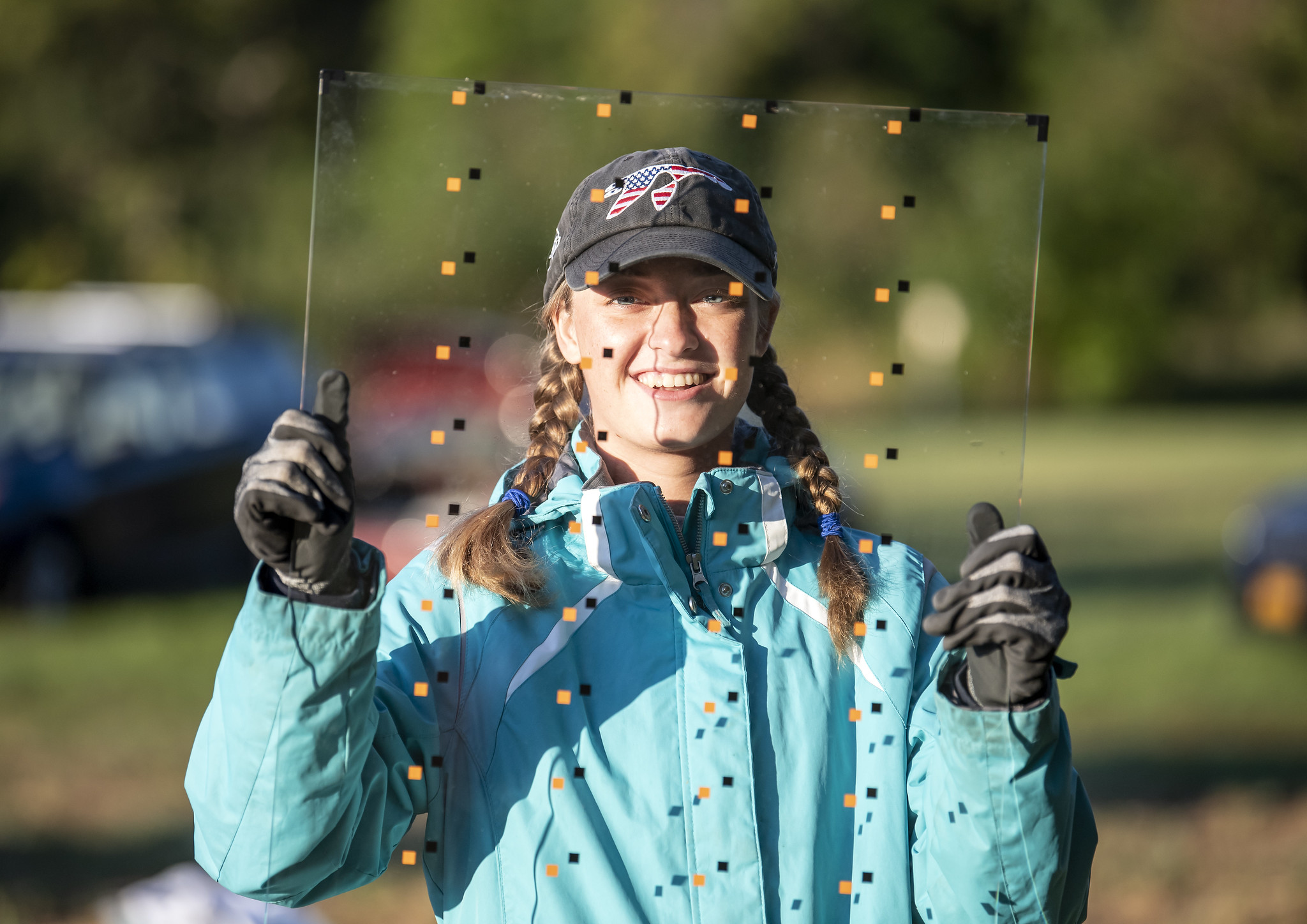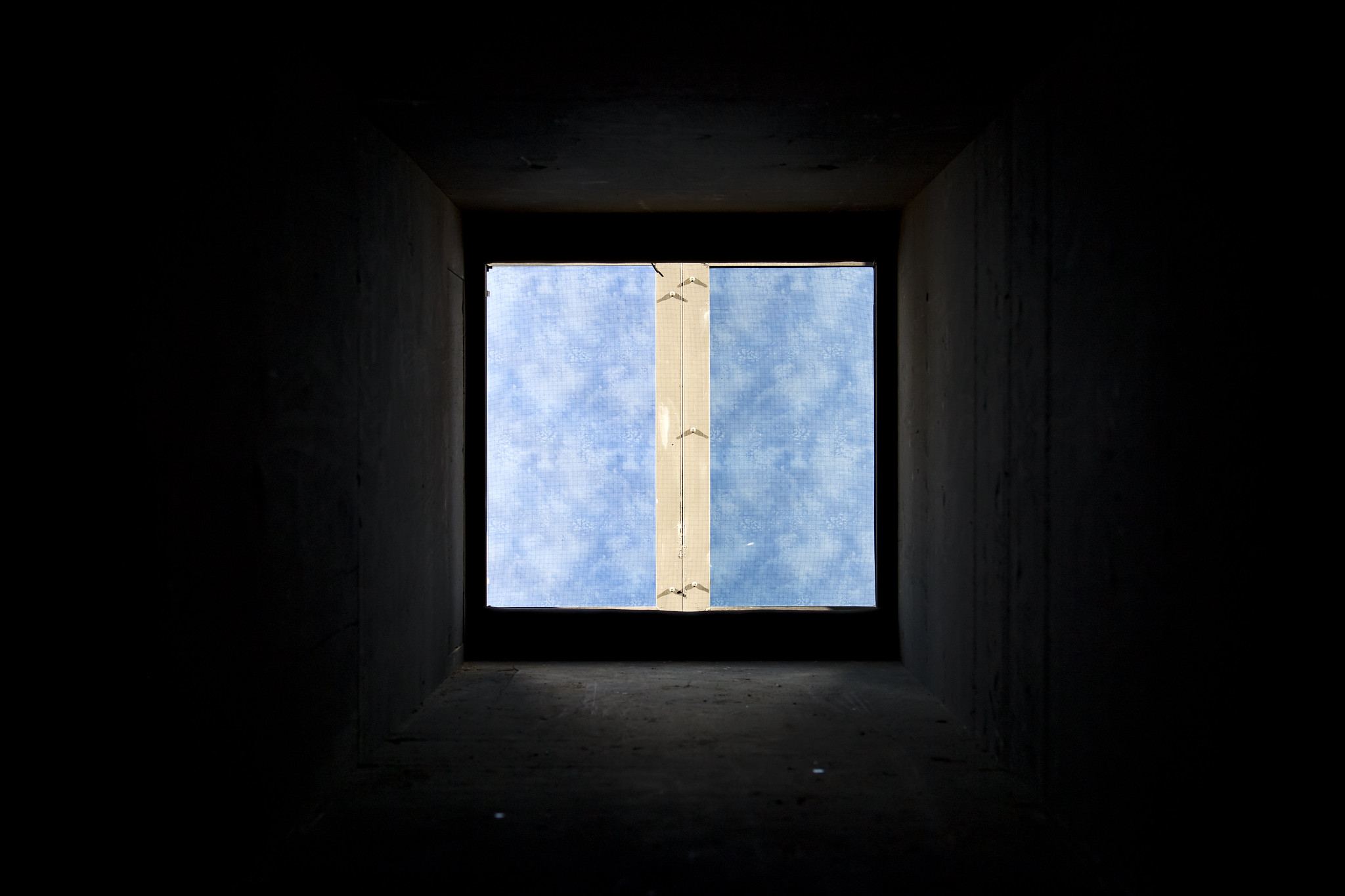Washington College Joins Forces with American Bird Conservancy (ABC), Doubling the Organization’s Capacity to Test and Rate Bird-Friendly Glass
College hosts 1 of only 2 tunnels designed to approve products that will reduce glass collisions, a leading cause of bird death worldwide.

Through a unique partnership, Washington College has become an official test site for the American Bird Conservancy's (ABC) bird-safe glass testing program, doubling the organization's capacity to test and rate glass products. The College is running just the second testing tunnel for ABC and is the only college or university in the country to partner with the non-profit in looking for ways to meet increased demand for solutions that address lethal glass collisions.
In just the first season, the College ran over 2,500 test flights and provided critical data back to ABC that helped gain approval for 10 new bird-friendly glass designs, which are in use by manufacturers in the U.S. and around the world, including in Brazil, Germany, Turkey, South Korea and the U.K. This spring, 15 new samples have been scheduled for testing between March and May. Learn more here.
Glass Collisions and the Threat to Birds
In the United States alone, glass collisions account for an estimated one billion bird deaths each year.
The root cause of glass collisions is the general reflectivity of the product. When it's highly reflective, it's generally reflecting back nature (trees, bushes, sky, etc.) and the bird sees that and wants to fly towards it. The simplest solution is glass with visible markings that birds can see. With markings spaced about 2 inches apart, most birds will pick up on the visual hint that it is solid and avoid flying into it.
ABC's research into the efficacy of bird-safe glass began over 10 years ago. Since then, ABC has established itself as a leading advocate and has developed a standard rating system for bird-safe glass – the only rating system in use today.
The existence of the Foremans Branch Bird Observatory (FBBO) at Washington College laid the groundwork for this innovative partnership. Operating on a rural parcel of land just outside of Chestertown since 1998, FBBO is a major migratory bird banding station that focuses on monitoring seasonal movements of birds. FBBO has 92 mist nets spread over 55 acres and a rotating team that collects and bags over 15,000 birds annually. FBBO is part of the College's River and Field Campus (RAFC), a living field lab that fosters environmental projects.
With the infrastructure and process already in place, integrating the flights through the glass testing tunnel into the procedure before releasing them made for a smooth transition.
“It all started when our partners at ABC reached out and said, ‘You've got this great banding station, you're banding birds daily…would you be willing to host a brand-new testing tunnel, to test the effectiveness of bird-friendly glass?'” said Michael Hardesty, Director, River and Field Campus at Washington College. “Our answer was, absolutely!”
“It was easy to say yes to this partnership because of how incredible it is for bird conservation, but we knew it would also be such a great opportunity for our students,” added Hardesty. “The glass testing program represents the full spectrum of science moving to action, moving to implementation and our students get to witness all of that, and to see an example of a field-based career opportunity that resulted from this partnership.”
The Testing Process
Washington College employs a Tunnel Technician as part of the project – a recent graduate -- and during the testing season, which runs from March to November, each glass sample is tested about 80-100 times to measure key data points that determine its effectiveness. Every flight is recorded and the Technician then does a frame-by-frame analysis to record a standard set of behaviors, such as what direction the bird flew, any avoidance behaviors, the speed of the flight and if it was direct or indirect.
The tunnel itself is 24-feet long and completely dark, with the only light coming through two different panes of glass at the end of the tunnel. The testing process is fully controlled and designed to eliminate any bias by running test flights using the sample that is being evaluated, a control type and then no glass at all. If a bird does fly directly towards the glass in the test tunnel, it bounces off of a mesh net that has a little bit of give before reaching the glass, ensuring that no birds are harmed in the process.

This testing process is also important because glass that is bird-friendly isn't friendly to the human eye. In order to achieve the widest adoption of these products, the goal is to find patterns that are both effective at preventing collisions and desirable from an aesthetic perspective. The good news is that most bird-friendly patterns are barely noticeable to people.
At the conclusion of the testing of a sample, ABC assigns the product a rating called a “Material Threat Factor”, which is based on how many times the bird flies towards the tested glass.
As awareness of bird deaths due to glass collisions has spread, the demand for bird-safe glass has grown. In New York City, legislation now dictates that all glass under 75 feet tall on new buildings use bird-friendly glass that meets the ABC standard rating of 25. Chicago is considering similar legislation. LEED, the world's leading green building certification system, now grants buildings a credit towards certification if they meet a requirement based on ABC's rating system.
“At ABC we have always thought that sustainable buildings can't really be sustainable if they are killing birds, and we are enjoying watching as the world's designers start to realize that we are onto something,” said Christine Sheppard, Director of ABC's Glass Collisions Programs.
In Maryland, legislation requiring state-owned and -funded buildings to have windows that are bird-safe has been introduced but not yet passed. It is expected to be re-introduced next session. Howard County already mandates that building projects meet bird-friendly design standards, marking a win for this effort in at least one of the state's jurisdictions.
About Washington College
Founded in 1782, Washington College is the tenth oldest college in the nation and the first chartered under the new Republic. It enrolls approximately 1,200 undergraduates from more than 35 states and a dozen nations. With an emphasis on hands-on, experiential learning in the arts and sciences, and more than 40 multidisciplinary areas of study, the College is home to nationally recognized academic centers in the environment, history, and writing. Learn more at washcoll.edu.
About ABC
American Bird Conservancy is a nonprofit organization dedicated to conserving wild birds and their habitats throughout the Americas. With an emphasis on achieving results and working in partnership, we take on the greatest problems facing birds today, innovating and building on rapid advancements in science to halt extinctions, protect habitats, eliminate threats, and build capacity for bird conservation. Find us on abcbirds.org, Facebook, Instagram, and Twitter (@ABCbirds).